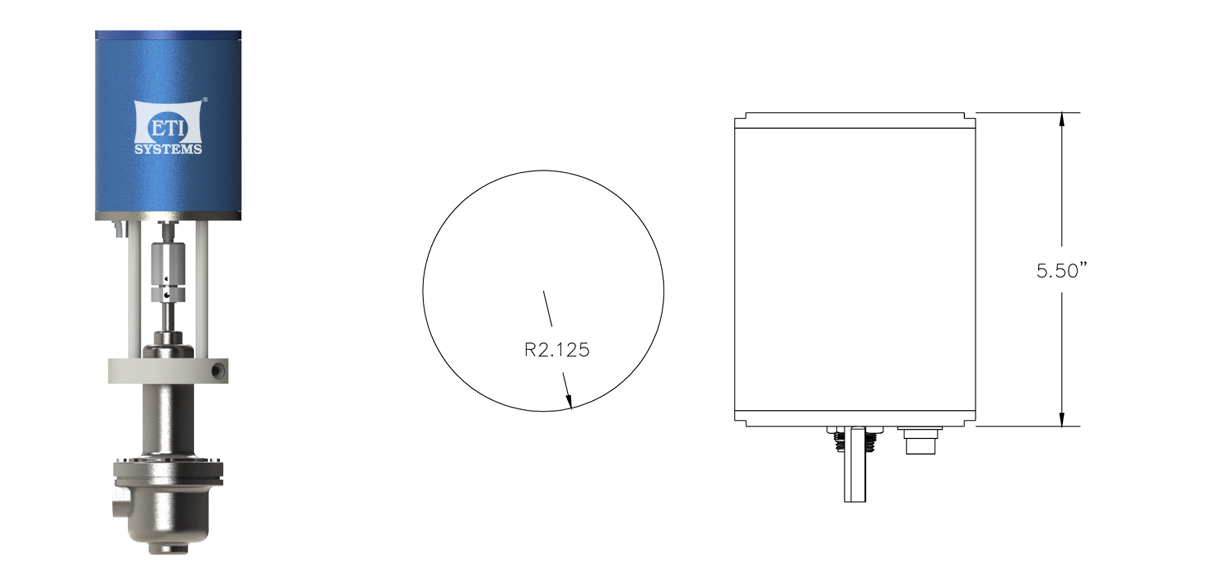Joysticks: Revolutionizing Control in the Digital Age
Welcome to the thrilling world of joystick technology, where control meets innovation in the digital age. Whether you’re a seasoned gamer looking to conquer new realms or a tech enthusiast intrigued by cutting-edge advancements, this blog post is your ticket to understanding how joysticks are revolutionizing the way we navigate through virtual worlds. Get ready to embark on an exciting journey as we delve into the history, evolution, and limitless potential of these handheld marvels that have become synonymous with immersive gaming experiences. From their humble beginnings to their current state-of-the-art capabilities, join us as we unravel the secrets behind joystick technology’s transformative power in our ever-expanding digital landscape. So grab your controller and buckle up for an exhilarating ride!
Introduction to Joysticks Technology
Joystick technology has revolutionized control in the digital age. It allows users to interact with digital devices in a natural and intuitive way. Joysticks are used in a variety of applications, including video games, industrial equipment, and medical devices.
Joystick technology was first developed in the early 20th century for use in aircraft. The first joystick was patented in 1944 by Ralph Baer, who is also credited with inventing the first video game console. Joysticks became widely used in video games in the 1970s and 1980s. Today, they are an essential part of many gaming consoles and PCs.
Joysticks are also used in a variety of industrial applications. They are often used to control machinery or robotic arms. In some cases, joysticks can be used to input data into computer-aided design (CAD) software.
Medical devices such as wheelchairs and hospital beds often incorporate joystick technology. This allows patients to control their environment with greater ease and independence.
The future of joystick technology is exciting. Researchers are developing new ways to use joysticks to interact with digital devices. For example, scientists at Carnegie Mellon University have created a prototype device that can be worn on the fingers like a ring. This device allows users to control multiple digital devices at once without having to physically touch them.
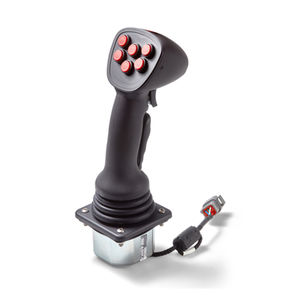

History of the Joysticks
The joystick is a pointing device that consists of a stick that can be tilted in multiple directions to move an on-screen cursor. The first video game joystick was used on the Atari 2600 console in 1977. The joystick quickly became the preferred input device for video games, replaced by game pads and other controllers in the 1990s. Today, joysticks are used in a variety of applications such as gaming, virtual reality, and industrial control.
The first joystick was invented in 1964 by a Canadian engineer, Ralph H. Baer. He developed the device for use with his prototype video game, the Brown Box. The joystick had two buttons and was used to control a cursor on the screen. The joystick was later adapted by other game developers and became popular in arcades, leading to its wider adoption as a gaming controller.
In the 1980s, joysticks saw an increased use in computer gaming and flight simulators due to their ability to provide a greater level of control than a keyboard or mouse. This prompted companies such as Logitech, Thrustmaster, and Microsoft to develop specialized controllers for games such as flight simulators.
Today, joysticks are still used for gaming but also have applications in virtual reality (VR) systems, robotics, medical research, and industrial control systems. Joysticks are also used for surgical robots that allow surgeons to perform operations remotely with greater precision than traditional methods.
Benefits of Joysticks Technology
Joystick technology has revolutionized control in the digital age by providing a more intuitive and natural way to interact with digital devices. Joysticks offer a number of advantages over traditional input methods such as keyboards and mice, including:
– Greater flexibility and precision: Joysticks offer a wider range of movement than keyboards or mice, allowing for greater precision when interacting with digital content.
– More comfortable and ergonomic: Joysticks are typically more comfortable to use than traditional input devices, as they allow your hand to rest in a more natural position. This can reduce strain and fatigue during extended use.
– Increased immersion and interaction: Joysticks provide a more immersive experience when playing video games or interacting with virtual environments. This can lead to increased enjoyment and satisfaction with the overall experience.
– Reduced cost: Joysticks are typically less expensive than traditional input devices, making them a more attractive option for budget-conscious users.
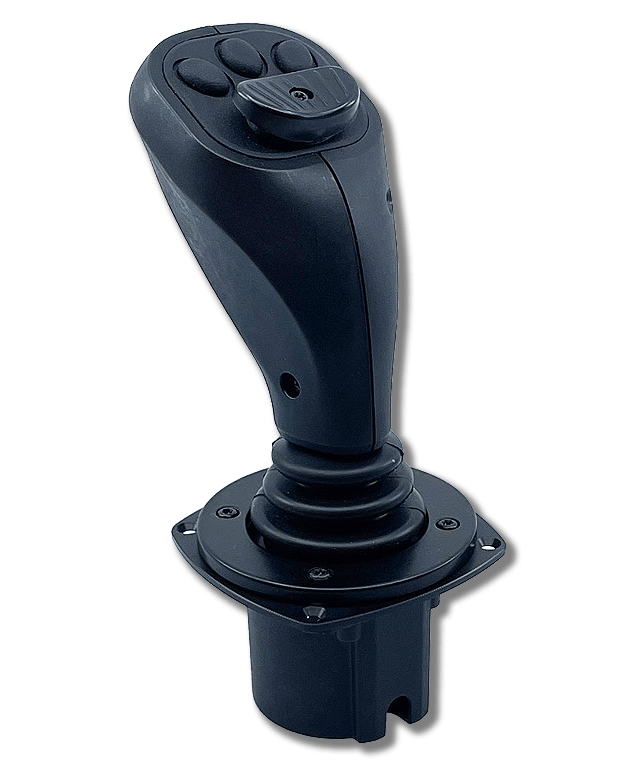

Applications of Joystick Technology
Joystick technology is not just limited to gaming applications. This type of technology can be used in a variety of industries, including:
-Aerospace and defense
-Automotive
-Construction
-Consumer electronics
-Healthcare
-Industrial automation
-Robotics
-Telecommunications
-Transportation
-Virtual reality
Common Types of Joysticks
There are two common types of joysticks: 4-way and 8-way. 4-way joysticks are the most basic type and are typically found on older arcade games. They only allow movement in four directions (up, down, left, and right), which is why they’re also sometimes called “digital” or “D-pad”joysticks.
8-way joysticks are more advanced and allow for diagonal movement as well as up/down/left/right. They’re often used on more modern arcade games, as well as some fighting games.
In addition, there are also analog joysticks. These allow for much more precise movements, such as controlling the speed of an in-game vehicle or adjusting the camera angle in a 3D game.

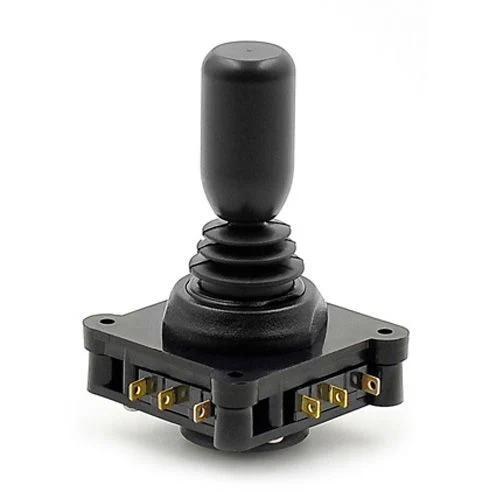
Future Trends and Developments in Joystick Technology
Joysticks have come a long way since their early days as simple control devices for video games. Today, they are used in a variety of applications ranging from gaming to industrial control and everything in between. As joystick technology continues to evolve, we can expect to see even more innovative uses for these versatile devices.
Some of the most exciting recent developments in joystick technology include the following:
- Improved ergonomics: One of the most important trends in joystick design is the focus on ergonomics. As more and more people use joysticks for extended periods of time, there is an increasing need for devices that are comfortable to use and won’t cause fatigue or strain. Manufacturers are responding to this demand by designing joysticks with contoured grips, adjustable palm rests, and other features that make them more comfortable to use.
- Wireless connectivity: Another major trend is the move towards wireless connectivity. Joysticks that connect to PCs or other devices via Bluetooth or WiFi are becoming increasingly popular, as they offer greater flexibility and freedom of movement. Wireless joysticks are also more convenient to use, as there are no cables to get tangled up in.
- Force feedback: Many newer joysticks feature force feedback, which allows users to feel resistance or vibration when they interact with virtual objects on screen. This helps create a more immersive and realistic experience for gamers and can also be used for training simulations and other applications where realism is important.
- Increased precision : As joystick technology continues to advance, manufacturers are focusing on improving the precision and accuracy of their devices. This is especially important for applications such as flight simulators and industrial control systems where even small errors can have serious consequences.
- Advanced features: Some joysticks now feature advanced features such as programmable buttons, pressure-sensitive triggers, and more. These additional features allow users to customize their gaming experience or control their industrial equipment with greater ease and precision.
The future of joystick technology looks very exciting. We can expect to see continued improvements in ergonomics, wireless connectivity, force feedback, precision, and additional advanced features that will make these devices even more versatile and useful than they already are.
Conclusion
Joystick technology has come a long way in the past few years, and it’s revolutionizing the way we interact with digital systems. With its precise control capabilities, it offers users more accuracy and flexibility than ever before. As joystick technology continues to improve, new applications for this versatile tool are sure to emerge–and no doubt these will be game-changers in their own right! So if you’re looking for a reliable control system that provides excellent performance without sacrificing comfort or precision, look no further: joystick technology is here to stay!
Our Products
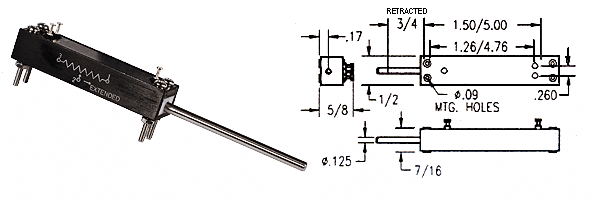
Conductive Plastic Element Black Anodized Aluminum Body, Stainless Steel Shaft, Gold Plated Terminals Recommended for Test and Lab Equipment, Industrial Applications, Medical Equipment (non-life support) Life Expectancy: 20 million strokes Resistance Tolerance: 20% standard (10% Available) Linearity Tolerance: .5% to 1.5% standard (0.3% to 1.0% Available) Power Rating: 0.2 to 1.2 Watt Electrical Stroke: 1″ […]

Conductive Plastic Element. Gold Plated Terminals. High Temp. Thermoplastic Housing. Stainless Steel Shaft. Recommended for Medical Equipment (non-life support), Robotics, Industrial, Test and Lab Equipment. Life Expectancy: 10 million turns Resistance Tolerance: ± 10% standard ( ± 10% available) Linearity Tolerance: ± 1.0% standard ( ± 0.5% available) Electrical Angle: 320º ± 5º Mechanical Angle: […]
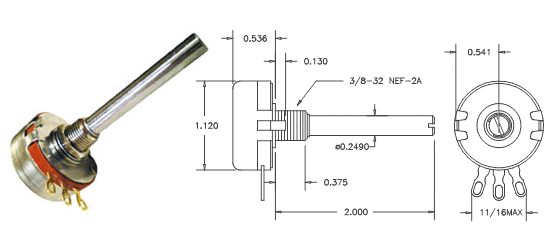
Hot molded carbon element Gold-plated terminals Stainless-steel shaft and housing Quality meeting or exceeding MIL-R-94 – QPL listed Rotational Life: 25,000 Resistance Tolerance: ± 10% or ± 20% Operating Temperature Range: -65°C to +125°C Power rating: 2 watts Insulation Resistance – dry: 10K Meg; wet: 100K Meg Dielectric Strength: 900 VRMS Starting Torque: 1 oz/in […]
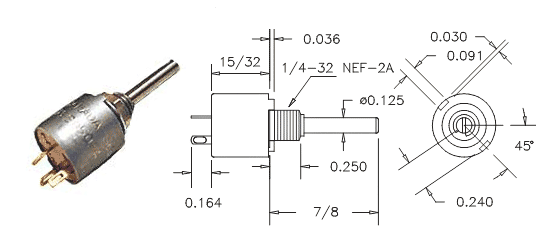
Hot molded carbon element One piece housing and bushing Stainless-steel shaft Quality meeting or exceeding MIL-R-94 – QPL listed Rotational Life: 25,000 Resistance Tolerance: ± 10% or ± 20% Operating Temperature Range: -65°C to +125°C Power rating: 0.5 watts Insulation Resistance – dry: 10K Meg; wet: 100K Meg Dielectric Strength: 750 VRMS Operating Torque: 0.5 […]

MG22 Concentric Turns Counting Dial Counts up to 20 turns. One Piece Mounting. Aluminum Housing. Black Nylon Knob. Numbers are White on Black Background. Over the Center Lock Available. Diameter – 7/8″; Extension from Panel – 1.0″ Maximum Panel Thickness – 1/4″ Weight: .2 oz

Electrical Specifications: 10K ohm precision potentiometer Single axis joystick Cylindrical knob Linearity (independent): ± 5.0% Lever Electrical Angle: 40° Max. Resolution: Essentially Infinite Mechanical Specifications: ± 20° from center deflection angle Life expectancy: 5 million operations Spring return to center Housing material: High temp. thermoplastic IP65 Rating
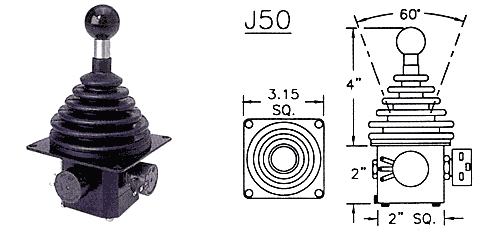
Two axis joystick 4″ handle height 60° deflection angle ( ± 30°) Ball knob Spring return to center Circular deflection pattern 10K ohm precision potentiometer Protective rubber boot (IP54 rating above panel) IP65 option available upon special request Panel mounting bracket
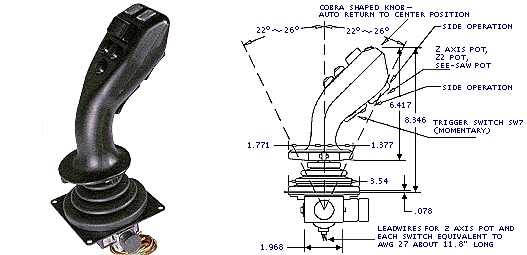
Multi-axis joystick 8.34″ handle height 45° deflection angle ( ± 22.5°) Spring return to center Cobra Head handle Circular deflection pattern 10K ohm precision potentiometers – all axis Three momentary switches (two illuminated, one trigger) Panel mounting bracket Protective rubber boot (IP65 rating above panel)
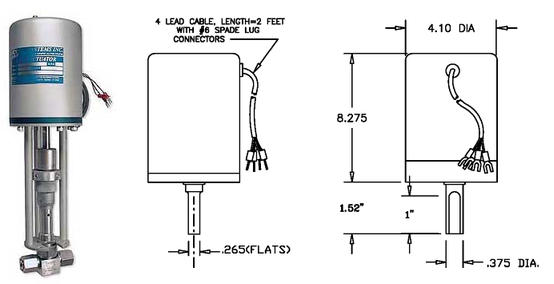
Input: 4 to 20 mA (200 ohms) or 0 to 10VDC (18KΩ) Rotation Speed : 1.5, 3, 5, 10, 20 or 40 RPM Power : 24 VDC (50 Watts min.) Dynamic Braking : Installed Limit Switches : Installed Torque Limiter : Set for Valve requirements. Wt : Approx. 21 in/lbs. max. Seating Limiter : Set […]
